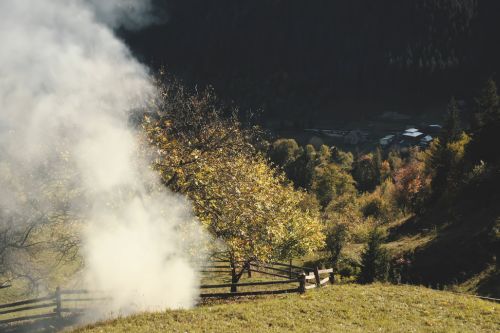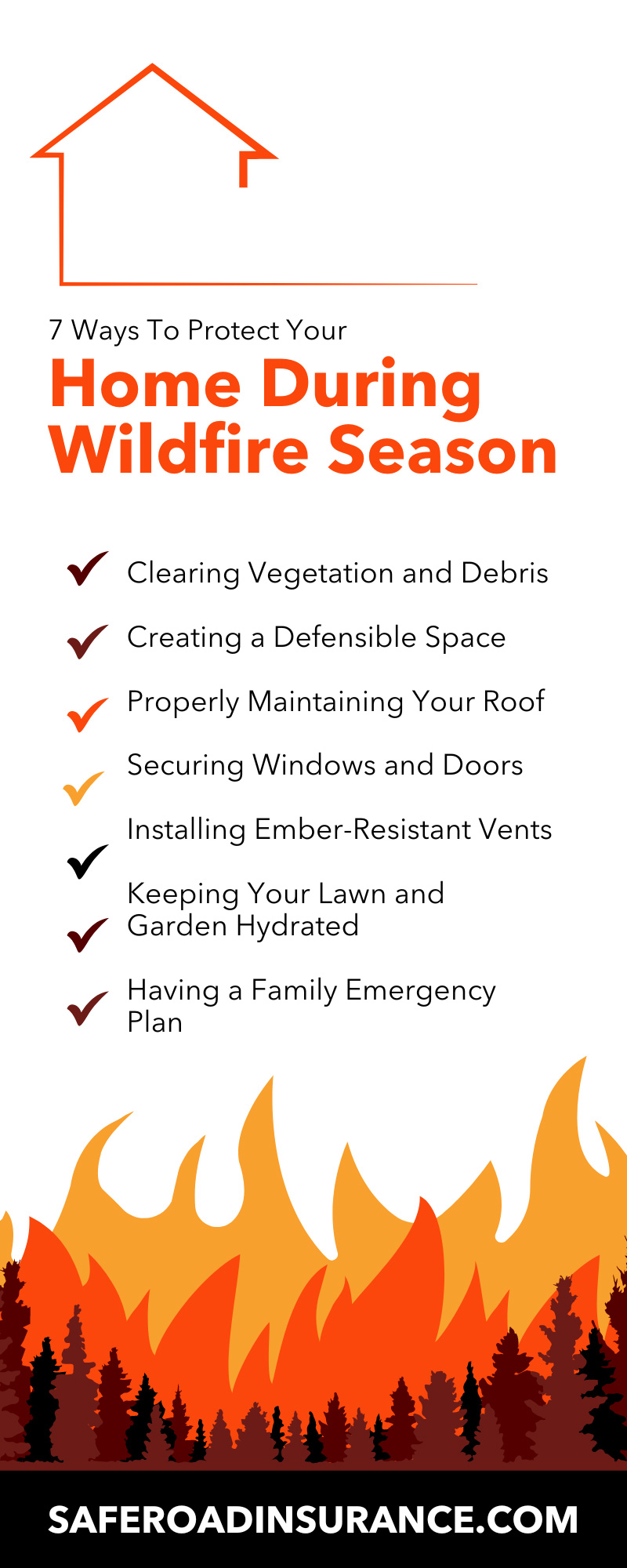
Wildfires in California and across the West Coast have become a recurring headline, underscoring a stark reality for residents: The need for proactive measures to safeguard their homes from the increasing threat of fire.
Understanding and implementing protective practices can be the difference between disaster and resilience for homeowners and community members. Here are seven key strategies to protect your home from wildfires to stay prepared this season.
Clearing Vegetation and Debris
Removing all flammable vegetation and debris from around your home is one of the most effective steps you can take. Maintain a 30-foot zone of defensible space around your property, ensuring it’s free from dried leaves, branches, and other materials that could fuel a fire. This simple action can significantly reduce the risk of flames reaching your home.
Creating a Defensible Space
Creating a defensible space around your property isn’t just about clearing vegetation. It also involves choosing fire-resistant plants and building materials. Consider using rocks, gravel, and other non-combustible materials in your garden to help stop or slow a wildfire.
Purchasing low-growing plants that hold a lot of moisture can also cut down the chances of a fire catching. These types of plants are naturally less flammable than dry, tall ones, making them a great barrier against fires. A few to consider are:
- Succulents
- Hostas
- Creeping Jenny
- Sedum
- Ajuga
Properly Maintaining Your Roof
Your roof is one of the most vulnerable parts of your home during a wildfire. Ensure that it consists of fire-resistant materials and is free of debris like fallen leaves and pine needles, which could catch embers. Regular roof maintenance and inspections can help identify and address potential risks.
Securing Windows and Doors
Windows and doors might not hold up well against wildfires. Try installing dual-pane windows with one pane made of tempered glass to better handle the heat. For extra safety, consider getting non-combustible shutters or fire-resistant curtains. Don’t forget to seal any gaps in your doors—including the garage door—to keep embers out.
Installing Ember-Resistant Vents
Homes can catch fire from the inside out if floating embers from a wildfire sneak in through vents and openings. Consider swapping out regular vent covers for ones that resist embers to lower this risk.
These special covers keep dangerous sparks out, adding an important layer of protection. This easy upgrade can really boost your home’s chances of surviving a wildfire and gives you peace of mind that you’re doing what you can to protect your property and loved ones.
Keeping Your Lawn and Garden Hydrated
A well-hydrated landscape can act as a natural firebreak. Watering your lawn and garden regularly, within local water use regulations, keeps vegetation from drying out and becoming fuel for a fire. Consider a drip irrigation system for efficient watering that maintains moisture levels without waste.
Having a Family Emergency Plan
Getting ready for a wildfire means doing more than just physical stuff; you also need a solid plan on how to act if a wildfire threatens your area. It’s super important to have a clear evacuation plan that you can practice routinely. This plan should include different ways out in case of road blockages, a way to keep in touch with family if you get separated, and an emergency kit that’s ready to go.
Knowing how to contact your local emergency services and what they suggest can really help when you need to evacuate. Being sure about what you should do and where you should go before anything bad happens can save you a lot of time and cut down on the stress and confusion that come with having to leave your home.
The Importance of Early Preparation
Implementing these strategies early in the season can give you a significant advantage. Preparing your home before wildfire season allows you to address all potential risks, increasing your home’s resilience. Early action can also bring peace of mind, knowing you’ve done everything possible to protect your property and loved ones.
Evacuation Planning and Tips
An effective evacuation plan includes knowing multiple routes out of your area, maintaining a go-bag of essential items, and staying informed through local emergency services. You can replace your valuables, but you cannot replace a life. It’s crucial to prioritize safety and leave promptly when authorities recommend evacuation.
Essential Items for Your Evacuation Go-Bag
Having a go-bag ready is crucial for your prompt departure in the event of an evacuation. This bag should contain essentials that support you and your family’s basic needs for at least 72 hours. Here is a list of must-have items to include in your evacuation go-bag:
- Water and non-perishable food
- First aid kit
- Flashlights and extra batteries
- Battery-powered or Hand-crank radio
- Personal hygiene items
- Extra clothing
- Blankets and pillows
- Important documents—copies of important documents such as identification, insurance policies, medical records, and bank account records in a waterproof, portable container.
- Cash and credit cards
- Chargers for mobile devices—include solar-powered options if possible, to ensure communication lines remain open.
- Maps of the area
- Specialty items for infants, older adults, or disabled family members—ensure you consider and accommodate each family member’s specific needs.
- Pet supplies—include food, water, and other supplies essential for your pet’s care.
Keeping your go-bag updated and ready is key for a quick and safe evacuation if a wildfire hits. Make sure to update your supplies regularly. Also, getting involved with local community efforts, tapping into available resources, and sharing strategies and support can boost your safety and the community’s strength. Join in on local wildfire preparedness and recovery programs to improve your and your community’s readiness.
Keep Your Family Safe Today
Refer to our list of ways to protect your home during wildfire season as we approach the summer to keep your family safe and prepared. While physical preparations are vital, comprehensive protection plans are also essential.
Partnering with Saferoad Insurance, a reputable home and auto insurance company in California, can offer an additional layer of security, ensuring your home and family have the coverage you need against wildfire risk. Stay proactive, stay informed, and stay safe. Let’s work together to create safer communities that are ready for any natural disaster. Contact us today for more information on our extensive list of insurance coverages.
